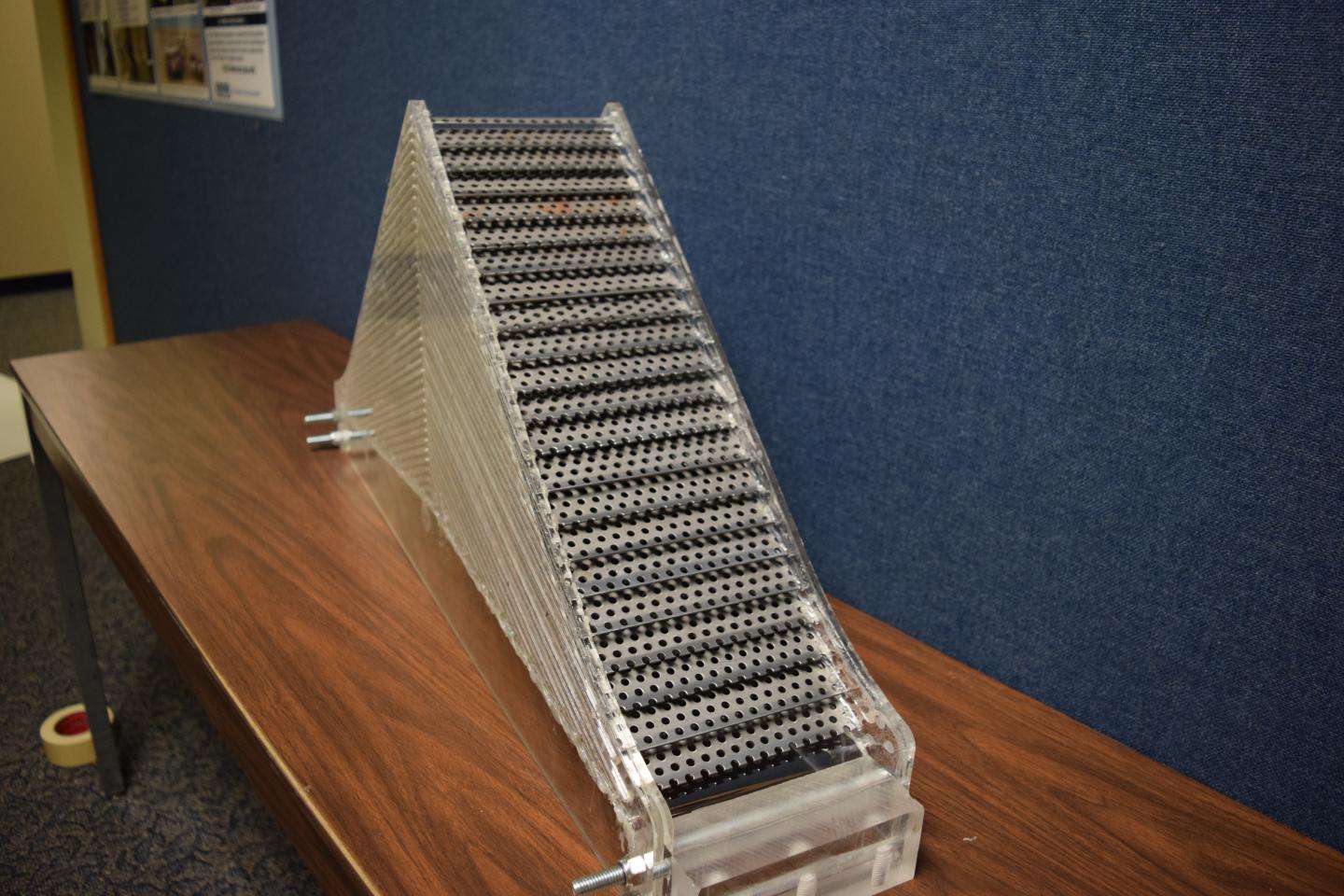In a move that seems like it’s straight out of Star Trek, new developments towards a real cloaking device are making stealthed objects a reality.
This new research into a real cloaking device comes from researchers at Penn State University who created an underwater ground clock that could redirect sound waves in order to conceal objects.
In order create the real cloaking device, the scientists used metamaterial that actually holds properties not found in nature, allowing waves to bend around an object and make it appear as if it weren’t actually there.
As a test of the device’s capabilities, the team created a three-foot-tall pyramid out of steel plates and placed in underwater. They then produced sound waves with a hydrophone, and were able to find that the metamaterial redirected the waves in a way that would make the pyramid seem invisible.
“These materials sound like a totally abstract concept, but the math is showing us that these properties are possible,” said Amanda Hanford, an assistant professor of acoustics with Penn State’s Applied Research Laboratory, in a statement. “So, we are working to open the floodgates to see what we can create with these materials.”
At this point, the specific details of the real cloaking device haven’t been released, but the team will present their findings during the Acoustical Society of America annual meeting held later this week in Minneapolis.
The creation of the real cloaking device marks just the latest efforts of scientists trying to take technology from fantasy and bring it into real life. While we might not be flying at the speed of light anytime soon, there are certain inclusions from fantasy and science fiction that may not be too unrealistic in the near future.
This testing of the device is a long time in the making, with a professor with the University of California- San Diego first testing a material that could lead to the potential creation of an “invisibility cloak” back in 2015. The creation of the real cloaking device marks one of the first true applications of that technology, however, so it’s certainly a momentous occasion.
Researchers from the University of Rochester also played a key part in the development of the technologies that could eventually lead to a real cloaking device – claiming to uncover technologies around a year ago that could make objects invisible.
The applications for such a real cloaking device are immense, and one of the most obvious uses would be in the Defense industry. Being able to cloak their soldiers or vehicles and have them hidden from enemy sight would be a huge boon, and it’s possible that later developments towards the device will lend themselves towards that sort of application.
At this point, however, we’re still in the early stages of figuring out how, exactly, this real cloaking device functions and how to make it function on a more realistic and practical level. Moving forward, it will be interesting to see how researchers at both Penn State University and other organizations around the world take this technology and expand upon it.
Developing a material that doesn’t seem like it could make sense is certainly shocking to the average person, but the math appears to check out and it’s clear from the testing that this real cloaking device can truly turn objects invisible.
We could continue to see the lines between science fiction and reality blur as technology becomes more and more advanced. With a mission to Mars seeming more and more like a reality and our reach into outer space becoming more powerful with new instrumentation, the future of technology seems incredibly bright – and this cloaking device is only a small part of that revolution.
[SOURCE]




